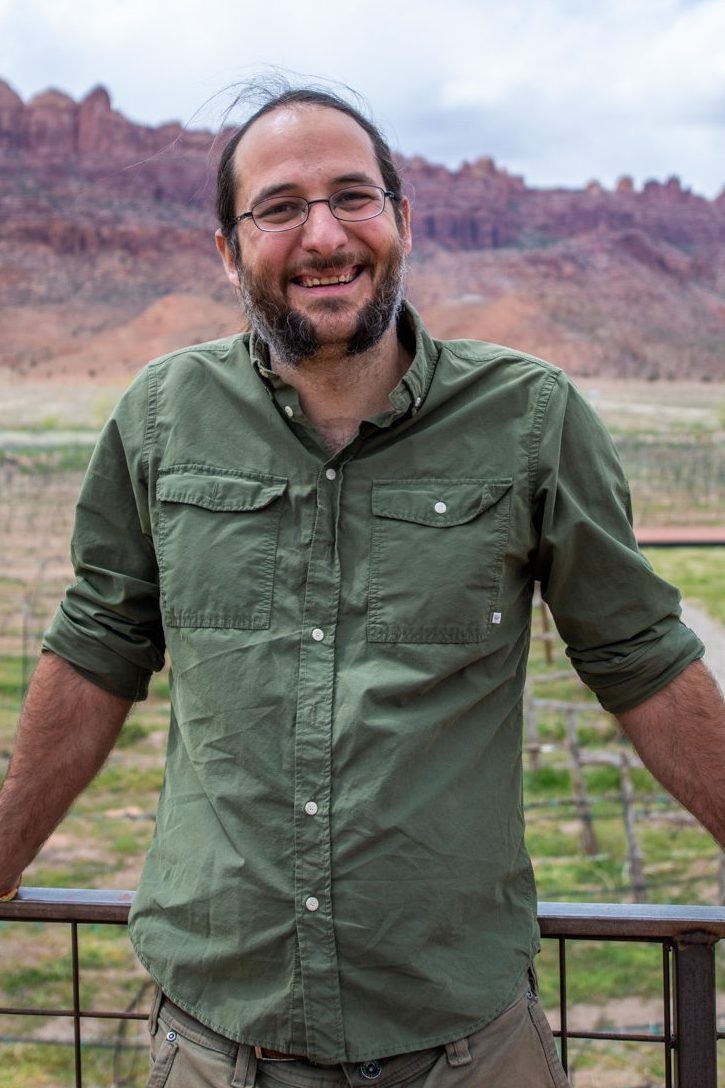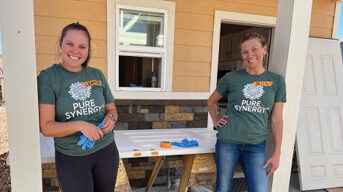Some information may be outdated.
A well-maintained grapevine can live and produce fruit for over one hundred years. All the plant needs to grow grapes each year is stored in its trunk, according to Russ Reali, the wine-maker at the Spanish Valley Vineyard and Winery.
The winery’s grapevines, which cover five and a half acres, were planted in the 1970s as part of a Utah State University experiment—Zimmerman, the road the winery is located on, is named after the professor who planted the vines.
Originally the vineyard sprawled over 300 acres. Over the years, the winery was pared down as the property shuffled through owners who tried to commercialize the vineyard. Jared Richards bought the space in 2018 and is the fourth and current owner.

A desert vineyard
White wine grapes do incredibly well in the valley, Richards said: the winery’s “superstar wines” are its riesling and gewürztraminer, but it also offers a classic cabernet sauvignon and a cherry wine made with cherries grown in Payson.
The winery is small—the wines are all fermented and bottled in a room the size of a large garage—but that’s what makes the tasting experience so unique, Richards said.
“You’ll be sitting 20 feet from the vines that produced the wine you’re drinking and you’re talking to the same person whose blood is on the vines from working with them,” he said. “There’s something so cool about that full cycle.”
Reali is just getting started as the vineyard’s winemaker. He is now enrolled in online winemaking classes through the University of California Davis.
He said the process of getting the vines to produce valuable and tasty grapes is “surprisingly precise.”
Right now, as the vines bloom, he’s focused on making sure each vine will grow only a few clusters of grapes.
The idea is that the vine only has so many nutrients to give to the fruit, he said—fewer clusters of grapes mean there will be more concentrated flavor.
It may be surprising that grapes can grow so well in the desert, but Reali says the vines are so established that they don’t require much water.

Creating Community
This time of year is critical for the vines—they’re just beginning to bloom—and for the business, as Richards is trying to make the spot into more of a community staple, adding a new outdoor patio and an elevated viewing platform.
This summer Richards plans to host casual “industry appreciation” nights for anyone in the local restaurant industry to hang out at; there will also be live music on Friday nights.
“If there’s one thing that makes Moab so great, it’s the eclectic and unique group of people here—people have passion and vision, and they’re all doing something for a purpose,” he said.
The Spanish Valley Winery offers tastings ($20 per person) and tours ($50 per person).
“We love our locals,” Richards said. “It seems like right now, most of our visitors are out-of-towners looking for something to do in Moab—but we’d love to see more locals come out here.”
Appreciate the coverage? Help keep local news alive.
Chip in to support the Moab Sun News.





